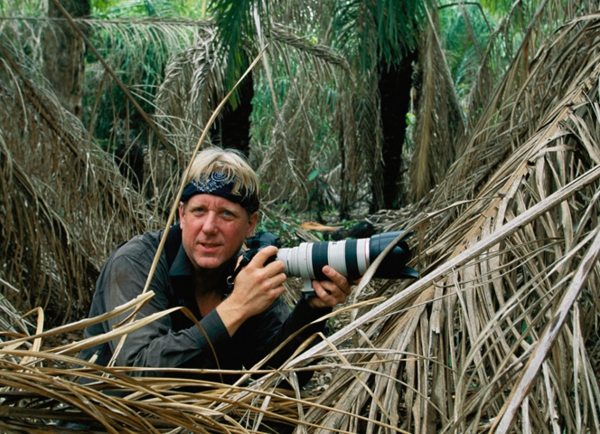Getting up close and personal with nature is a highlight for most travellers and from looking a fearsome predator in the eye (hopefully from a distance), or watching a rare bird take flight, wildlife-watching has never been so popular. But all too often these are fleeting glimpses – by the time you’ve unpacked your camera, adjusted the settings and aimed the lens, your subject has already disappeared.
So how do you go about getting those incredible photographs, the ones which you always see in National Geographic and think, ‘I could do better than that!’ Well – you could spend your holiday glued to your view-finder, ssshing anyone who speaks in case they disturb the animals, and maybe you’ll get lucky.
Or, you could put yourself in the hands of professional tour guides and photographers on a wildlife photography expedition. With specialist advice on the best locations and techniques, you’re almost guaranteed a great shot. This type of adventure travel is available around the world, so here are just a few examples:

Dolphins & Seals in New Zealand
The pristine environments of New Zealand are home to an abundance of wildlife, but the main draw is to be found in the top-right corner of the South Island as the town of Kaikoura is the place to be for dolphin- watching expeditions. Regular boat trips track pods of dolphins and sperm whales, allowing for stunning photography as they come to the surface. Be sure to hire a wetsuit if you’re following dolphins, because these loveable mammals love to swim alongside humans and are curious enough to come within a few feet.
On Safari
Here’s a scene for you to picture: A leisurely breakfast outside your tent, followed by a brisk walk through some of the most incredible scenery in the world. Return to camp for a fine meal while you share stories and your own incredible photographs with your fellow travellers. Sound good? Then maybe you should go on Safari!
Catching the Big Five in Africa remains the favourite for many, but don’t forget you can also track tigers in India, elephants in Nepal, or orangutans in Borneo. This most dramatic form of adventure travel is a major source of revenue for often impoverished communities and so goes a long way towards protecting these tragically endangered species.
Bird-Watching
There is an abundance of opportunities for keen ornithologists all over the world – why not enjoy a cruise through the Galapagos Islands where you can try and photograph all 13 endemic species of Darwin’s famous finches, or the beautiful waved albatross. Penguins, boobies, the world’s only flightless cormorant, can all be found here. A little closer to home is the Picos de Europa in Spain, a stunning mountain range where you’ll find several majestic birds of prey including Golden eagles, vultures, and kestrels.
Polar Exploration
With the melting of the ice-caps, and new marine technologies, it’s easier than ever to visit the icy wildernesses of the North and South Poles. The species occupying these pristine landscapes conjure up many iconic images – polar bears leaping between ice floes in the Arctic, rockhopper penguins lining up to dive as leopard seals and killer whales prowl the depths waiting for them in the Antarctic. These are once-in-a-lifetime journeys, offering experiences never to be forgotten, especially if you manage to capture them on film!
While there is no shortage of companies offering tours to these spectacular destinations, travellers should always take care to book their trip through an operator with a strong Responsible Travel policy. In many cases these are fragile environments with animals at risk of extinction.
Biog: Rob is an eco-warrior actively searching for the ultimate adventure travel trip that doesn’t destroy the planet.


Incredible! This blog looks exactly like my old one!
It’s on a entirely different subject but it has pretty much the same page layout and design. Great choice of colors!